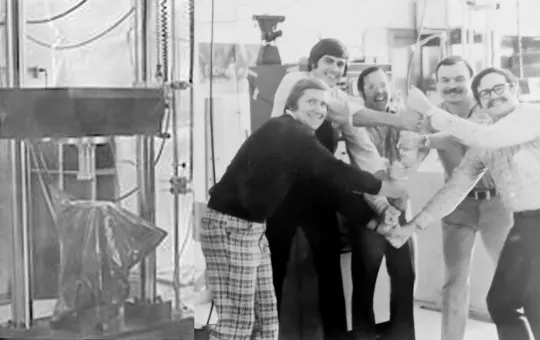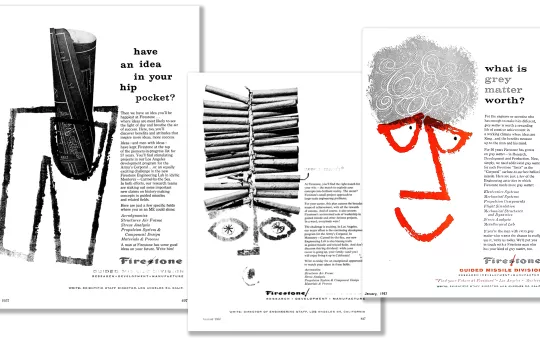

The Beginning
50 years ago this month, our founders filed the articles of incorporation with the State of California and so began the Lansmont Corporation! There are stories to share about the wonderful history and contributions made by this company. We intend to parse out more interesting, relevant stories over the next few months, as we continue to recognize this significant milestone.
We can actually trace our Lansmont origins back into the mid-1950s. Firestone won a government contract to produce what was called the Corporal missile for the United States Army and that production occurred in Los Angeles, California. The production began in 1951, with the first flight occurring in 1952.
In the 1957 timeframe, Firestone established a Research Laboratory in Monterey, California and began recruiting Engineering talent to the area in journal advertisements such as Popular Science – stating “You’ll find stimulating projects in our Los Angeles development program for the Army’s Corporal…or an equally exciting challenge in the new Firestone Engineering Lab in idyllic Monterey – Carmel by the Sea.”
In 1959, Firestone sold the Engineering Lab to Research, Inc., which then became known as Monterey Research, Inc. In the 1960s they became Monterey Research Labs, or MRL. MRL possessed expertise in high-velocity shock equipment and testing, primarily focused on the aerospace and automotive industries. Two of the key MRL players at that time were gentlemen named Frank Bresk and Bill Kipp.
Around 1968, the Director of Michigan State University’s School of Packaging, Dr. James Goff, contacted MRL, with the idea that the shock testing technology could be utilized to help design more rugged commercial products so they would require less protective packaging to facilitate their movement through the supply chain. MRL had a relationship with a gentleman named Dr. Bob Newton of the Naval Post Graduate School in Monterey, who then partnered with both MRL and MSU to develop what was called the Fragility Assessment Theory and Test Procedure, part of which includes Damage Boundary shock testing. By using this procedure, a product’s fragility (ruggedness) could be quantified, and those results could be used to help simplify the design of any required protective packaging.
To prove out that theory, Michigan State University then undertook a research effort, using a variety of real-world products, and putting them through Newton’s recommended test procedure - using an MRL IMPAC shock machine on consignment. There were a small group of key MSU grad students that helped with the research/testing and it was their successful collaborative results that subsequently led to the formation of the Lansmont Corporation. The picture below was taken in Lansing, Michigan 1971 to recognize the incorporation of the company and the shock machine on the left was the original IMPAC test system consigned from MRL. The two gentlemen on the left are Ed Church and Ken Horiszny (recent MSU grad students at that time) and the next two are Bill Kipp and Frank Bresk who had been with MRL. Those four make up the original, legal founders of our company. The fifth gentleman on the right is Dennis Young (another MSU grad student), who was an integral part of the original group that generated the foundational effort. Considering the people and their respective locations/cities, they called the company LANSMONT (LANSing – MONTerey).
An interesting piece of trivia – performing Damage Boundary testing on a shock machine results in what is called a Damage Boundary plot. The design of Lansmont’s original 1971 logo was based upon such a Damage Boundary plot…
Lansmont was high-tech before "high-tech" was a thing. It’s not a stretch to say that during the 70s, 80s, 90s (and still today), all of the major technology companies of the world developed and tested their technologies using Lansmont test systems - before ever introducing them to the market. Our technologies truly changed the world and they continue to do so today. All the gentlemen pictured above were (and still are) recognized giants of their time, known and respected around the world.